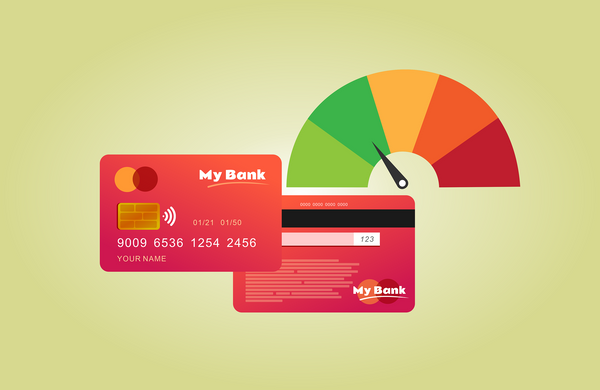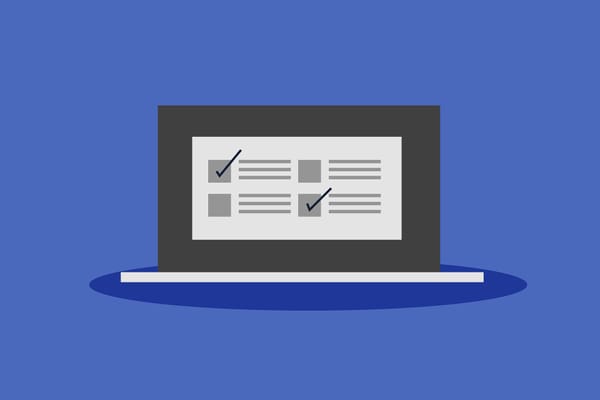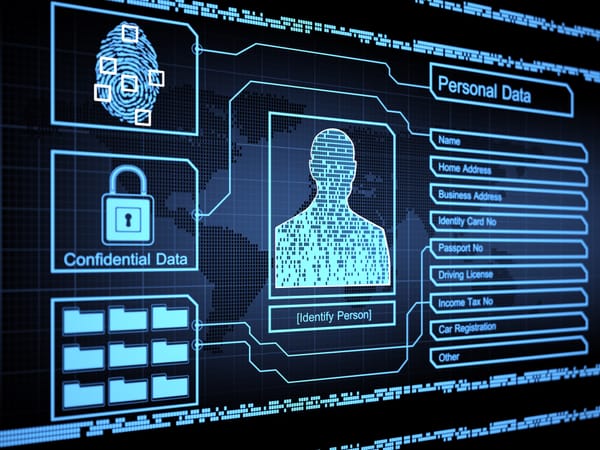How to protect your credit score from identity thieves

"Someone stole my data and opened a bank account in my name" is one of today's most common (and horrifying) digital identity theft stories. And it is just the beginning of a nightmarish journey to recover from the damage and hopefully minimize the long-term consequences, such as a bad credit score.
Victims of identity theft learn too late that their personal info has been used for bank fraud – when they receive notifications for payments for loans they didn't take, confirmations of money transfers they didn't make, or have their credit score checked for a loan.
When you are planning to buy a house or a car, you'll put in place all kinds of financial strategies to increase your credit score so you can qualify for the loan. Imagine what it’s like to discover that all your efforts and sacrifices were in vain.
Digital identity theft can ruin your credit score. Keep reading so you can learn how to protect yourself from it.
A good credit score is typically considered anything above 650. This means you have a history of making payments on time and a low debt-to-income ratio. This can help you qualify for loans with low-interest rates, which save you money over time.
It only has to happen once
Identity theft is the fraudulent acquisition and use of your personally identifiable information: name, address, date of birth, phone number, Social Security number (SSN), online passwords and credentials, credit card numbers, and other financial information.
Breaches including sensitive PII: 80%
Top 2021 data exposed:
Name: 96% (97% in 2020)
Date of Birth: 60% (49% in 2020)
Medical History: 48% (22% in 2020)
Home Address: 39% (54% in 2020)
Full SSN: 33% (41% in 2020) - via Sontiq
The bad news is that fraudsters can get much of this data with little or no effort at all. For example, if your email and password, full name, address, and credit card number are saved with an e-commerce website and the merchant suffers from a breach, your data is leaked on the internet or for sale on the Web.
A fraudster can use this information to shop with your card, empty your bank account, open new accounts in your name, and make illegal transactions, leaving you with a hefty bill.
U.S.: AN IDENTITY IS STOLEN EVERY 30 SECONDS
Here are some key facts, not to scare you but to put you on guard:
- The Identity Theft Research Center (ITRC) reports a record number of data compromises in the US in 2021, amounting to a 68 percent increase over 2020.
- According to the Aite-Novarica Group, 47 percent of Americans suffered financial identity theft in 2020.
- Top Five Types of Identity Theft in 2021:
- Government benefits applied for/received: 31%
- Credit card fraud—new accounts: 29.2%
- Miscellaneous identity theft: online shopping and payment account fraud, email and social media fraud, medical services, insurance and securities account fraud, and other identity theft – 24.1%
- Business/personal loan: 8.5%
- Tax fraud: 7.2%
The frequency and velocity of today's data breaches have made us all forever vulnerable to cybercriminals and fraudsters.
The likely impact of a data breach on you
Whenever someone finds your personal information, you run the risk of getting ripped off.
A thief could:
- Empty your retirement, savings or day-to-day account
- Open new credit cards or other lines of credit in your name
- Make purchases using your cards
- File a tax return using your Social Security number
- Access your medical records, benefit from your insurance, obtain care, medical treatments, or prescriptions in your name
Javelin Strategy reports that 1 in 3 data breach victims later fell victim to identity theft.
28% of victims have to borrow money from family or friends
83% of victims were unable to rent an apartment or find housing
33% of victims did not have enough money to buy food or pay for utilities
54% of victims felt violated due to misuse of their identity
67% of victims could not pay their bills
(SOURCE | ITRC, Consumer Aftermath Report, 2021)
How worried should you be? Self-assessment tool (Yes | No)
The first step in being safe online is knowing if you are at risk. Here are some examples to help you with that:
- [ ] You store information (insurance, insurance, bank statements) on your computer or mobile device.
- [ ] You keep digital copies of your documents (passports, driving license, SSN) on your phone or laptop or shared in emails.
- [ ] You use the same password to log in to multiple accounts.
- [ ] You have online accounts with details about you on so many websites that you've lost track of them.
- [ ] You opened unsolicited emails and notifications about winning prizes, gift cards, or lottery
- [ ] You haven't set up notifications/ alerts for activities for all your bank accounts.
- [ ] You haven't checked your credit reports in a while.
- [ ] Your data leaked in a breach.
The more "yes" answers you have, the more vulnerable you are in case of a health data breach.
What you can you do to protect your credit score
There's not much you can do about breaches. Instead, you can regain control of your personal information by limiting the amount you provide to companies and monitoring it. Sticking to good security practices is free, and it pays off:
- Check your credit reports once a year. You're allowed a free credit report check (from Experian, Equifax, and TransUnion) every year on AnnualCreditReport.com. If someone steals your identity and tries to open new cards or loans in your name, it will appear on your credit report.
- Review your credit card statement every month and check for suspicious or unfamiliar transactions.
- Activate an auto-alert service that will alert you each time there's a transaction on your card.
- Don't click on suspicious links or share sensitive financial and personal information (passwords, payment information, PIN) on the phone.
- Use unique, strong passwords and enable two-factor authentication on accounts.
- Change all passwords after a breach.
- Delete as many old, unused accounts as you can. The more places that have your data, the more chances of getting it exposed.
- Use Digital Identity Protection to check whether your email addresses and the accounts linked to them have been in a breach.
What to do if someone used your name to open new accounts or get credit:
If money has been taken from your bank account, you get bank letters, bills or letters from debt collectors that you know nothing about, there are certain steps you should take:
- Contact your bank immediately to let them know and freeze your cards/accounts.
- If someone has applied for credit in your name, contact the main credit reference agencies: TransUnion, Equifax, Experian and request a credit freeze with each of them.
- File an identity theft report with the FTC.
All fraud and scams should be reported, even if you are embarrassed or feel the amount of money is too small to worry about. While you might not be able to get your money back, you can help stop the con artist from scamming other people.
How can Bitdefender Identity Theft Protection help you?
Bitdefender Identity Theft Protection is our way of helping you fight identity theft and the losses and damages it inflicts.
We combined advanced detection technology, real-time alerts, 24/7 US-based support, and identity recovery in a unique solution. It monitors your SSN, email address and phone numbers in places where they should not be listed (including the Dark Web) and alerts you to changes in your address, court records in your name, and payday loans taken out in your name.
- Monitors and detects—Continuous monitoring of your medical accounts, identity, privacy and credit.
- Gives you Real-Time Alerts. When your information is at risk, you are rapidly notified.
- Recover & reimburse. If you fall victim to identity theft, you have the support of our #1-rated experts, and our insurance ranges from $1 million to $2 million, including reimbursement of stolen funds.
Don't wait until it is too late. Start protecting your digital identity today!
tags
Author
Cristina is a freelance writer and a mother of two living in Denmark. Her 15 years experience in communication includes developing content for tv, online, mobile apps, and a chatbot.
View all postsRight now Top posts
Outpacing Cyberthreats: Bitdefender Together with Scuderia Ferrari HP in 2025
March 12, 2025
Streamjacking Scams On YouTube Leverage CS2 Pro Player Championships to Defraud Gamers
February 20, 2025
How to Identify and Protect Yourself from Gaming Laptop Scams
February 11, 2025
Your Device ‘Fingerprint’ Will Go to Advertisers Starting February 2025
December 24, 2024
FOLLOW US ON SOCIAL MEDIA
You might also like
Bookmarks







